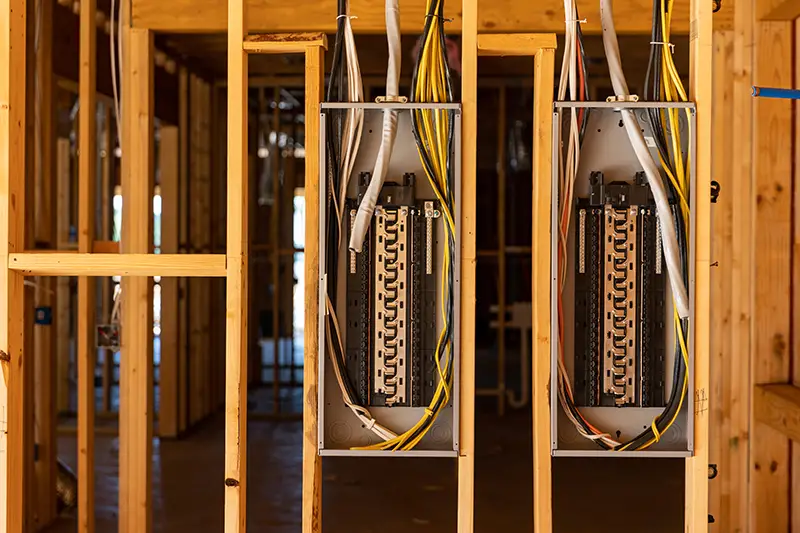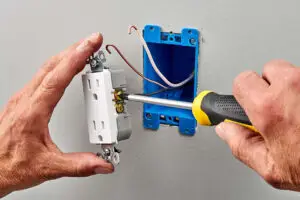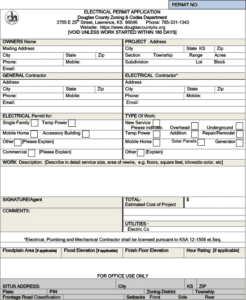Building a new home is an exciting venture, and one of the most critical components of the construction process is the electrical system. A properly installed electrical system ensures safety, efficiency, and functionality for years to come. In this blog, we will outline the typical steps involved when an electrician installs all new electrical portions in a new home build.
1. Planning and Design
Before any wiring begins, the electrician collaborates with the homeowner, architect, and builder to design the electrical system. This phase includes:
- Determining the number and placement of outlets, switches, and lighting fixtures
- Planning for major appliances and HVAC system connections
- Ensuring compliance with local building codes and safety regulations
- Incorporating energy-efficient solutions such as LED lighting and smart home technology
2. Temporary Power Installation
During the early stages of construction, a temporary power supply is often installed to provide electricity for tools and construction equipment. This typically includes:
- Setting up a temporary power pole or connection to the main electrical grid
- Installing a breaker panel for temporary use
- Ensuring proper grounding and safety measures
3. Rough-In Electrical Work
Once the framework of the home is in place, the electrician begins the rough-in stage. This involves:
- Running electrical wiring through the walls, ceilings, and floors
- Installing junction boxes for outlets, switches, and light fixtures
- Setting up wiring for major appliances, HVAC systems, and special circuits
- Installing the electrical panel and breakers to distribute power throughout the home
4. Inspections and Code Compliance Checks
Before walls and ceilings are closed up with drywall, a local electrical inspector reviews the work to ensure it meets all necessary safety and code requirements. The electrician makes any required adjustments based on the inspection findings.
5. Finishing Electrical Work (Trim-Out Phase)
After the walls, ceilings, and flooring are installed, the electrician returns to complete the final wiring and fixture installations. This includes:
- Installing light fixtures, ceiling fans, and recessed lighting
- Connecting outlets, light switches, and dimmers
- Hooking up major appliances such as ovens, refrigerators, and HVAC units
- Installing the final electrical panel cover and labeling circuits for ease of use
6. Final Inspection and Testing
Once all electrical components are installed, a final inspection is conducted to verify everything is up to code. The electrician also performs tests to ensure:
- All outlets, switches, and fixtures function correctly
- The electrical panel and breakers operate safely
- Grounding and surge protection systems are properly in place
- Smart home features (if included) are correctly configured
7. Homeowner Walkthrough and Handover
Before handing over the completed electrical system, the electrician typically provides a walkthrough with the homeowner. This includes:
- Demonstrating how to use the electrical panel and reset breakers
- Explaining energy-saving tips and safety precautions
- Answering any questions regarding future maintenance or upgrades
Conclusion
A well-installed electrical system is the backbone of a new home, ensuring reliability and safety for everyday living. Hiring a qualified electrician to handle this complex process guarantees that the work is up to code, efficient, and built to last. If you’re planning a new home build, make sure to work with a licensed and experienced electrician to get the job done right.






